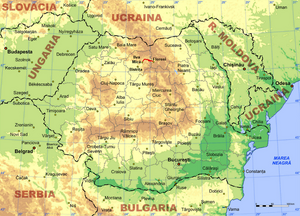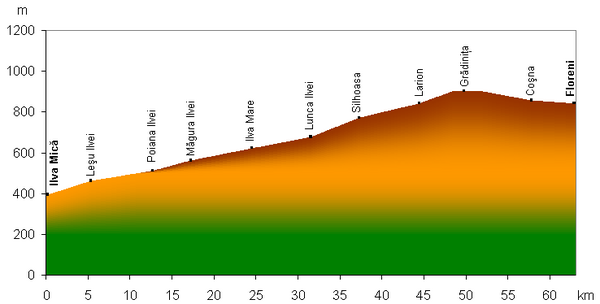Ilva Mică – Floreni railway line
| Ilva Mică – Floreni | |||||||||||||||||||||||||||||||||||||||||||||||||||||||||||||||||||||||||||||||||||||||||||||||||||||||||||||||||||||||||
|---|---|---|---|---|---|---|---|---|---|---|---|---|---|---|---|---|---|---|---|---|---|---|---|---|---|---|---|---|---|---|---|---|---|---|---|---|---|---|---|---|---|---|---|---|---|---|---|---|---|---|---|---|---|---|---|---|---|---|---|---|---|---|---|---|---|---|---|---|---|---|---|---|---|---|---|---|---|---|---|---|---|---|---|---|---|---|---|---|---|---|---|---|---|---|---|---|---|---|---|---|---|---|---|---|---|---|---|---|---|---|---|---|---|---|---|---|---|---|---|---|---|
| Course book route (CFR) : | 502 | ||||||||||||||||||||||||||||||||||||||||||||||||||||||||||||||||||||||||||||||||||||||||||||||||||||||||||||||||||||||||
| Route length: | 63 km | ||||||||||||||||||||||||||||||||||||||||||||||||||||||||||||||||||||||||||||||||||||||||||||||||||||||||||||||||||||||||
| Gauge : | 1435 mm ( standard gauge ) | ||||||||||||||||||||||||||||||||||||||||||||||||||||||||||||||||||||||||||||||||||||||||||||||||||||||||||||||||||||||||
| Power system : | 25 kV 50 Hz ~ | ||||||||||||||||||||||||||||||||||||||||||||||||||||||||||||||||||||||||||||||||||||||||||||||||||||||||||||||||||||||||
|
|||||||||||||||||||||||||||||||||||||||||||||||||||||||||||||||||||||||||||||||||||||||||||||||||||||||||||||||||||||||||
The Ilva Mică – Floreni railway is a main line in Romania . It runs from northern Transylvania through the Bârgău Mountains - part of the Eastern Carpathians - to Bukovina .
history
At the end of the 19th century (1898) the Austro-Hungarian authorities planned a railway connection between Ilva Mică in northern Transylvania and Dorna Vatra (today Vatra Dornei ) in Bukovina. Due to financial problems, however, this project was initially not carried out.
The lack of a connection between Transylvania and Bukovina posed great problems for the Austro-Hungarian army after the outbreak of World War I , because Russian troops cut off all rail connections through the occupation of Galicia . In the necessary haste, the Austrian and Hungarian authorities had a provisional railway line built from Prundu Bârgăului to Dorna Watra without tunnels and large bridges. This had extreme gradients of up to 8% and could only be driven on by special railcars and wagons.
After the end of the war, both Transylvania and Bukovina became part of Romania. The Romanian authorities took over the provisional railway line and at the same time planned to build an efficient connection. To do this, they resorted to the Austro-Hungarian plans of 1898. Construction began in 1924 but was interrupted in 1929 after the Romanian government signed a transit agreement with Poland and no longer saw an increased priority for the project. Strategic considerations led to the resumption of construction work in 1934.
Two years later the section from Ilva Mică to Lunca Ilvei was completed; it was technically less demanding and was partly based on the small railway built at the beginning of the 20th century . On the section from Lunca Ilvei to Floreni , nine tunnels with a total length of 2.38 km and 191 bridges with a total length of 1.51 km had to be built. On December 18, 1938, traffic began.
As early as 1940, the newly built railway line was largely worthless for Romania, when Northern Transylvania had to be ceded to Hungary by the Second Vienna Arbitration . In 1944 Romania received Transylvania back.
After the Second World War , it was necessary to relocate the route at Leșu Ilvei over a distance of 3 km.
Current situation
Along with the Sfântu Gheorghe – Siculeni – Adjud railway, the line is the only connection between the east of the country and Transylvania and is accordingly important for passenger and freight traffic. It is electrified and single-track. Currently (2009) around four local trains and six express or express trains run per day and direction.

